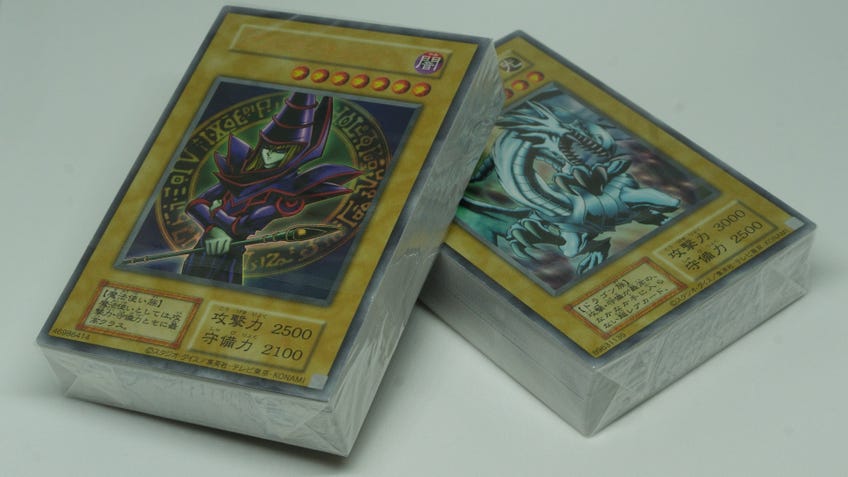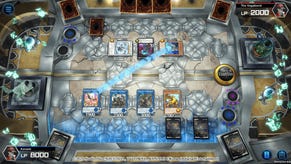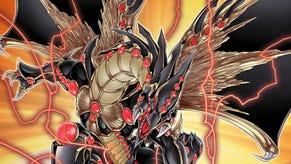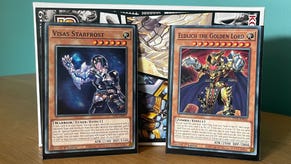How Yu-Gi-Oh!’s 1999 starter decks turned the card game from a flop into a phenomenon
Revisiting the Duel Monsters EX set as it’s reprinted for the series’ 25th anniversary.
Starter decks have long been an essential part of Yu-Gi-Oh!, providing pre-built decks that can introduce the rules to new players and allowing them to instantly jump into a duel to practise what they’ve learned. In the early days of the English release of the card game, decks based on the cards of Yugi Moto and Seto Kaiba were key to enticing anime fans into playing the real game, converting an audience of fans into duelists that helped build the game to what it is today.
Such products make Yu-Gi-Oh! more accessible and, as an entry point into the game for many, are often held in fondest regards by those whose first point of contact was through such releases. During the recent 25th anniversary celebrations at Tokyo Dome last month, Konami recognised the influence and love for one of the TCG’s earliest starter decks with an all-new reprint exclusive to those in attendance at the event.
1999's Duel Monsters EX was the second starter deck released for Yu-Gi-Oh!, and came at a crucial time in the then-fledgling card game’s history. Perhaps one of the most influential releases in Yu-Gi-Oh! history, this deck was a culmination of the first year of the game’s existence under the company’s stewardship and provided the blueprint for introducing the game to English-speaking audiences years later.
Yu-Gi-Oh! was in an unusual state as 1999 rolled around. Kazuki Takahashi’s manga, published in the pages of Weekly Shonen Jump, had undergone a shift in focus that elevated its popularity to become one of the most popular series in the world-famous magazine, taking the one-off Magic: The Gathering-inspired card game featured in one of its earliest stories and making it the focus of a supernatural epic with the rivalry of Yugi and Kaiba at its core. Meanwhile, Konami was enjoying great success with its line of Yu-Gi-Oh! video games based on the franchise.
Bandai's Official Card Game, the first attempt to bring Yu-Gi-Oh! to life, was much-hyped upon its initial release but soon flopped.
Its real-world TCG, however, was floundering. Under Bandai, the first attempt to bring the game to life was unusual to say the least, changing its rules and fundamentals into a new product of the publisher's own design. Launched in early 1998, Yu-Gi-Oh! Bandai's Official Card Game was much-hyped upon its initial release but soon flopped, no longer relevant in the eyes of fans and players alike by the end of the same year. By 1999, if any sort of real-world equivalent to the in-universe card game was to succeed, a new publisher and a more faithful reboot would be necessary.
This daunting mantle was taken up by Konami, having already found success in video games with two successful Yu-Gi-Oh! releases in 1998 alone - one for PlayStation, adapting the Capsule Battle game from the early chapters of the manga as a strategy title prior to the manga’s shift in focus onto the card game, alongside a card game-focused title for Game Boy that sold a phenomenal 1.5 million copies in Japan alone.
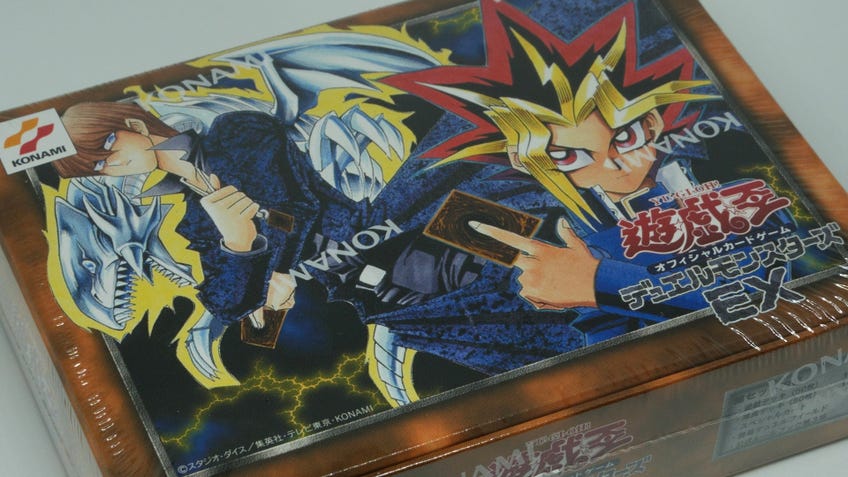
By this point the manga was deep into its first card game-centric story arc, Duelist Kingdom. Its anime adaptation from Toei, adapting the more eclectic, horror-inspired early chapters of the story where Shadow Games and Millenium Items were an ever-present aspect of the series - but games of chance and skill, not cards, were the battlefield of choice - was coming to an end. The March 1999 release of Toei’s 30-minute theatrical OVA for Yu-Gi-Oh! as part of the Toei Animation Fair would be the company’s final collaboration with the franchise, a short film that would adapt a full story based on the in-universe card game. One year later, Studio Gallop’s reboot of the series, removing select characters and shifting the focus to adapting only the card game chapters, would begin broadcasting on Japanese TVs nationwide.
Konami’s approach to rebooting the physical card game was a more faithful interpretation, following the rules introduced in the manga as much as possible, while making changes when necessary to create an engaging and entertaining game for all ages - even when the convenience of narrative storytelling to make a duel more exciting was removed.
Monster effects were entirely absent in Bandai’s adaptation but returned with Konami at the helm, while rules surrounding spell and trap cards, including how and when they could be activated, were introduced. Life Points would become the ultimate decider of winners and losers; Bandai’s card game had tallied the levels of destroyed monsters to determine a winner.

Response to the Yu-Gi-Oh! Official Card Game was more positive, fueled in part by the growing popularity of the franchise more broadly but also thanks to the strong reception of the game from fans due to its replayability. Early sets offering diehard players a chance to own their very own Blue-Eyes White Dragon and Dark Magician were always going to be a major draw for fans, but it was the core entertainment factor of its considered ruleset that would keep players invested.
In 1999 alone, starting in February, six booster packs made up of between 40 and 52 cards were released, slowly introducing the many card types that have become standard in the game today. In the first set, only Normal monsters, spell and equip spell cards were included alongside a single trap card, Trap Hole. Effect monsters were introduced in the third set, with counter trap cards introduced in the sixth set.
Konami’s approach to rebooting the physical card game was a more faithful interpretation, following the rules introduced in the manga as much as possible.
This slow rollout allowed players the opportunity to become accustomed to the many rules and new mechanics, especially as these rules underwent constant revision to factor in new card types, minimise confusion and fix any issues noticed in playtesting. Through both circumstance and good design, Yu-Gi-Oh! was a success, popular with audiences old and young all across Japan. It was a phenomenon, one so big as to lead to Konami organising a major event at Tokyo Dome in 1999 - the venue the company returned to in order to celebrate 25 years of the franchise earlier this year.
Although successful, issues with game balance remained. With a low card pool, variety in competitive matches was low. Coupled with few monster effects and rules that allowed any high-attack, high-level monster to be summoned without tributing, early matches of Yu-Gi-Oh! were more of a race to summon the strongest monster than something more considered and tactical as witnessed in modern Yu-Gi-Oh! matches. These issues were present for much of 1999, and had existed since the release of the first Starter Box set that spring.
Duel Monsters EX aimed to address some of these issues while providing an effective entry point for new fans. On that, it was a resounding success.

Duel Monsters EX was released in Japan in December 1999, one month after the release of the Volume 6 booster pack. By this point, a wider range of effect monsters, spell and trap cards had been introduced over the course of the previous six booster packs to offer a more expansive card pool, combined with the removal of rules restricting the use of spell and trap cards to just a single card per turn. Another change since the release of the Starter Box was the introduction of Tribute Summons, whose addition would help eliminate the proliferation of overpowering high-attack monsters as the sole path to victory.
With a growing competitive scene, the third edition of the rulebook featured in Starter Deck EX was reflective of these changes and the increasing level of strategy that a wider variety of card choice offered to players. For best-of-three tournament matches, a 10-card Side Deck had also been introduced.
Beyond the rules, there was one other feature about this starter deck that would differentiate it from its earlier releases; with news of an all-new anime based on the card game and rivalry between Yugi and Kaiba announced and set to begin airing at the start of the new millennium, the new Starter Deck included two decks, each themed around the two characters.
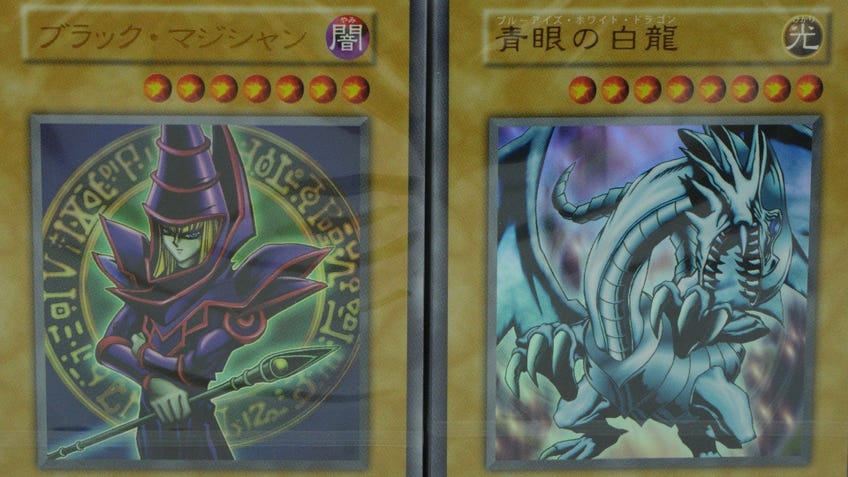
Having been long sought-after by fans throughout 1999, the 40-card decks inspired by Yugi and Kaiba featured reprints of legendary creatures like Blue-Eyes White Dragon and Dark Magician as holographic Ultra Rare cards.
In Kaiba’s deck, other prominent cards from the early chapters of the Duelist Kingdom arc of the manga - adapted into the earliest episodes of the soon-to-broadcast anime - including Judge Man, Hitotsu-Me Giant and Gyakutenno Megami, were included. Yugi’s deck, meanwhile, featured Mystical Elf; Summoned Skull; Winged Dragon, Guardian of the Fortress 1 and more. Each deck was ready for battle with essential spell and trap cards like Trap Hole, Monster Reborn, Fissure, Waboku and more, plus their own 10-card Side Deck, exactly as stated in the rulebook.
This was the culmination of a year of work from Konami. Duel Monsters EX not only brought accurate representations of the franchise’s most popular characters’ decks to store shelves nationwide, nor was it solely a vehicle for players to get hold of many of the strongest cards currently available. The two decks were competitive, took advantage of every mechanic in the game at the time and could be split with a friend for instant gratification. (There were even two duel mats included, ready for you and a friend to instantly get into a match.)
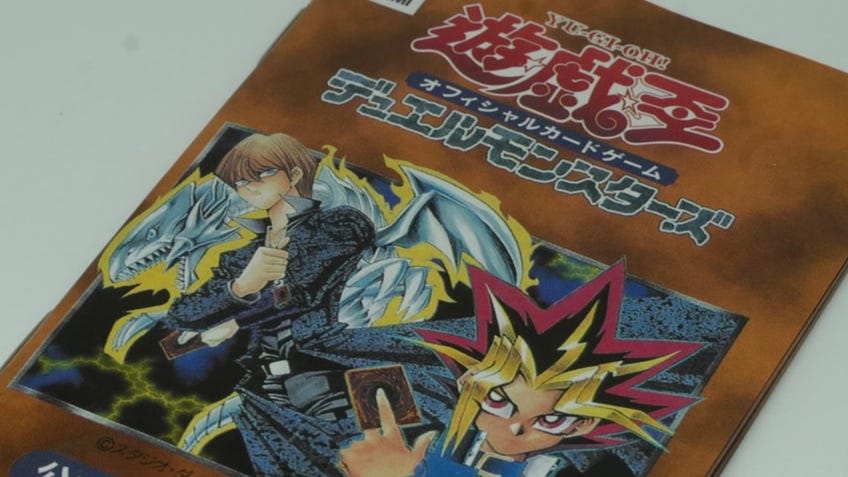
With Duel Monsters EX, Konami created the ultimate introduction to Yu-Gi-Oh! It was a major hit - so much so that the deck was reprinted with minimal changes to introduce newer cards just over a year later, included with a bonus VHS to introduce the rules and everything you needed to know to be ready to play. The starter set was the last piece in the puzzle that transformed the fortunes for the Yu-Gi-Oh! TCG in Japan.
In late 1998, under Bandai, unclear rules and a lack of balance in the original card game had caused it to slump even as the wider Yu-Gi-Oh! franchise continued to grow in popularity across manga, anime and video games. By the end of 1999, Konami’s relaunch of the TCG elevated Yu-Gi-Oh! to its maximum potential. Not only did it please dedicated fans, while enabling the series to grow and find new audiences ahead of an all-new anime, it provided the blueprint for the card game’s Western expansion years later; the two decks included in Starter Deck EX are similar in both contents and theming to the first two starter decks released by Upper Deck Entertainment when it localised the card game for English audiences.
With Duel Monsters EX, Konami created the ultimate introduction to Yu-Gi-Oh!
Whereas prior to the turn of the century Takahashi’s manga was the rallying cry for the Yu-Gi-Oh! franchise, its popularity 25 years later has far outgrown the original story - in no small part thanks to the card game. Nowadays it is the TCG that is the focal point of Yu-Gi-Oh!, its supporting anime and video games created in service of guiding players towards picking up the card game. While initial steps had been taken to direct Konami’s rebooted card game toward success, the value and design of the Starter Deck EX solidified Yu-Gi-Oh! as a complex game for audiences of all ages to invest in. Its integration with the manga and upcoming anime made it a bridge for interested fans to cross into the game to try it for themselves.
The decision by Konami to produce a one-to-one replica reprint of the set for Yu-Gi-Oh!’s 25th anniversary, down to including the same now-outdated rulebook and housing it in the same packaging, is a tribute to a release that not only changed Yu-Gi-Oh!, but influenced the wider world of card games forever. After all, would an anniversary celebration truly feel complete without remembering what it took to get here?
A copy of the reprinted Yu-Gi-Oh! Duel Monsters EX set was provided by publisher Konami.
